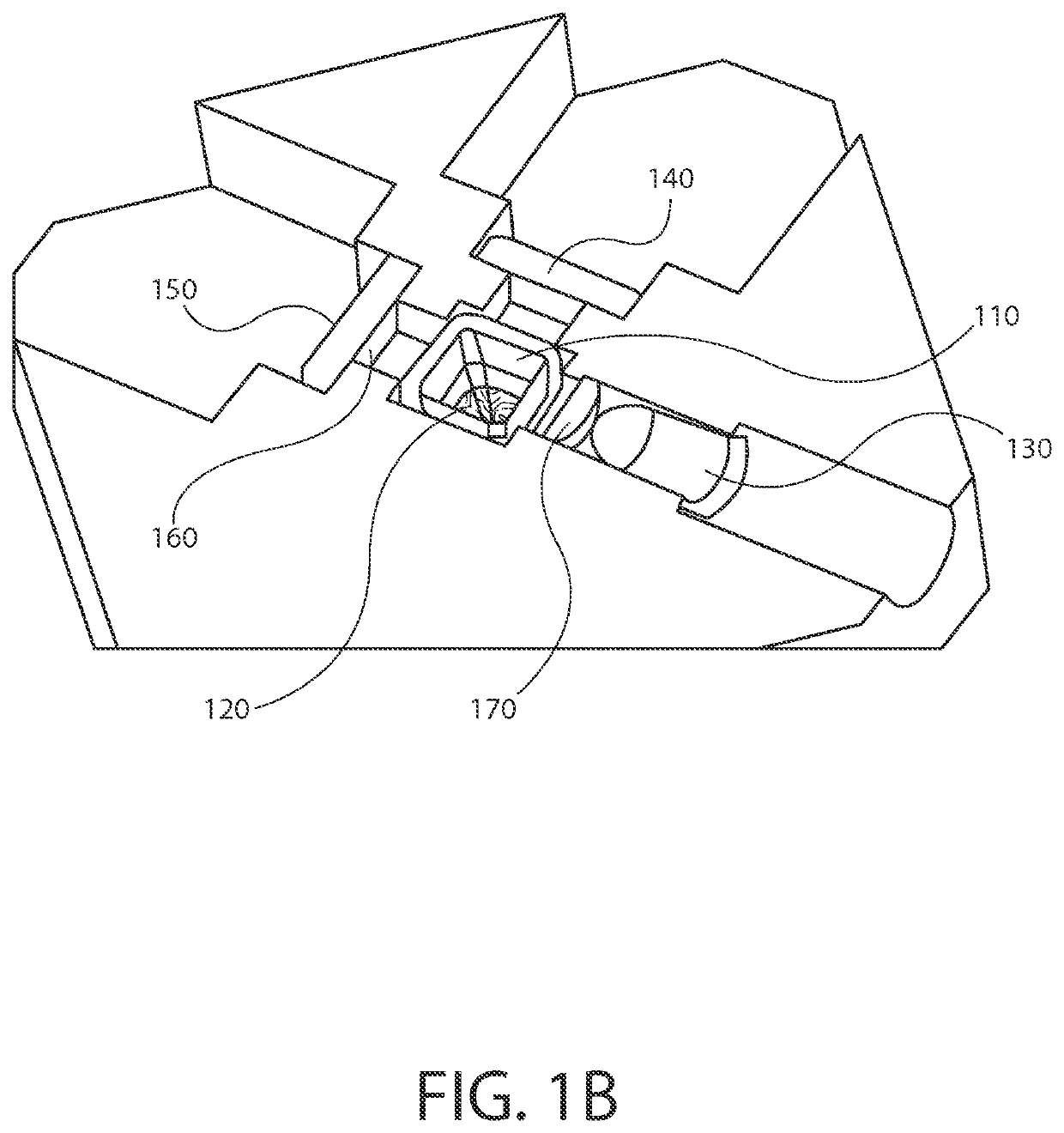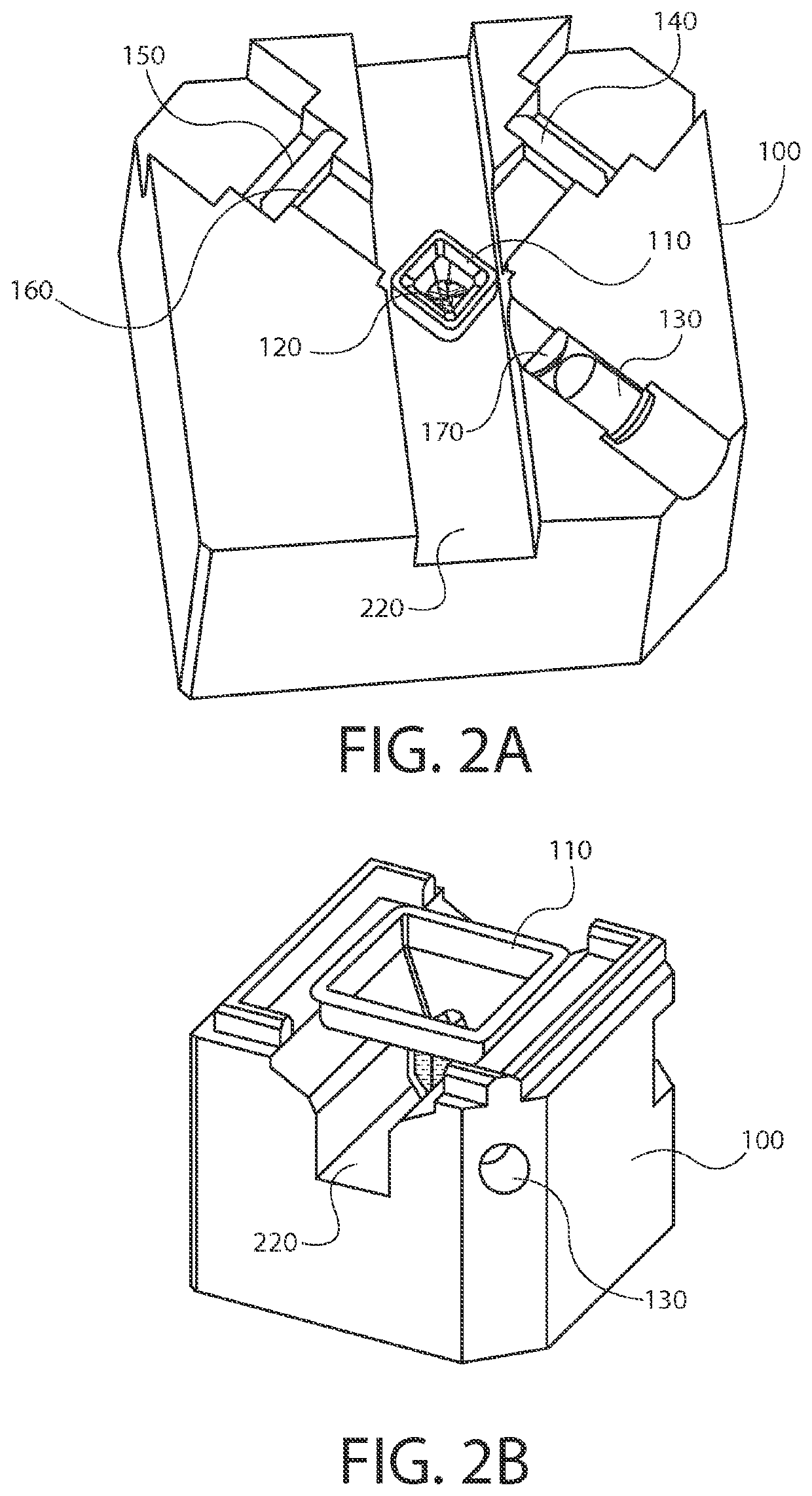Apparatus for optical inspection of small volumes of liquid sample and cuvettes therefor
a technology for optical inspection and liquid samples, applied in measurement devices, instruments, color/spectral properties measurements, etc., can solve the problems of reducing sample purity, difficult to determine the concentration of bacteria in a small fluid volume with a highly concentrated suspension, not disposable, etc., and achieve the effect of reducing the effects of reflectance refraction and diffraction
- Summary
- Abstract
- Description
- Claims
- Application Information
AI Technical Summary
Benefits of technology
Problems solved by technology
Method used
Image
Examples
Embodiment Construction
[0032]Embodiments described herein provide for automated methods of measuring turbidity of liquid suspensions using vessels that are configured to receive and measure low sample volumes yet accommodate dilution of the suspension inside the individual vessels. The disclosed methods further allow for measuring turbidity levels in suspensions having insufficient volume to be measured using conventional vessels and apparatus. The nephelometry apparatus described herein is configured for integration into a system where suspension dilution and turbidity measurements are automated.
[0033]All numerical values within the detailed description and the claims herein are modified by “about” or “approximately” the indicated value, and take into account experimental error and variations that would be expected by a person having ordinary skill in the art.
[0034]As used herein, a “low volume” and / or a “small volume” sample refers to a sample having a volume of about 100 μL to about 500 μL and all volu...
PUM
| Property | Measurement | Unit |
|---|---|---|
| angle | aaaaa | aaaaa |
| wavelength | aaaaa | aaaaa |
| volume | aaaaa | aaaaa |
Abstract
Description
Claims
Application Information
 Login to View More
Login to View More - R&D
- Intellectual Property
- Life Sciences
- Materials
- Tech Scout
- Unparalleled Data Quality
- Higher Quality Content
- 60% Fewer Hallucinations
Browse by: Latest US Patents, China's latest patents, Technical Efficacy Thesaurus, Application Domain, Technology Topic, Popular Technical Reports.
© 2025 PatSnap. All rights reserved.Legal|Privacy policy|Modern Slavery Act Transparency Statement|Sitemap|About US| Contact US: help@patsnap.com



